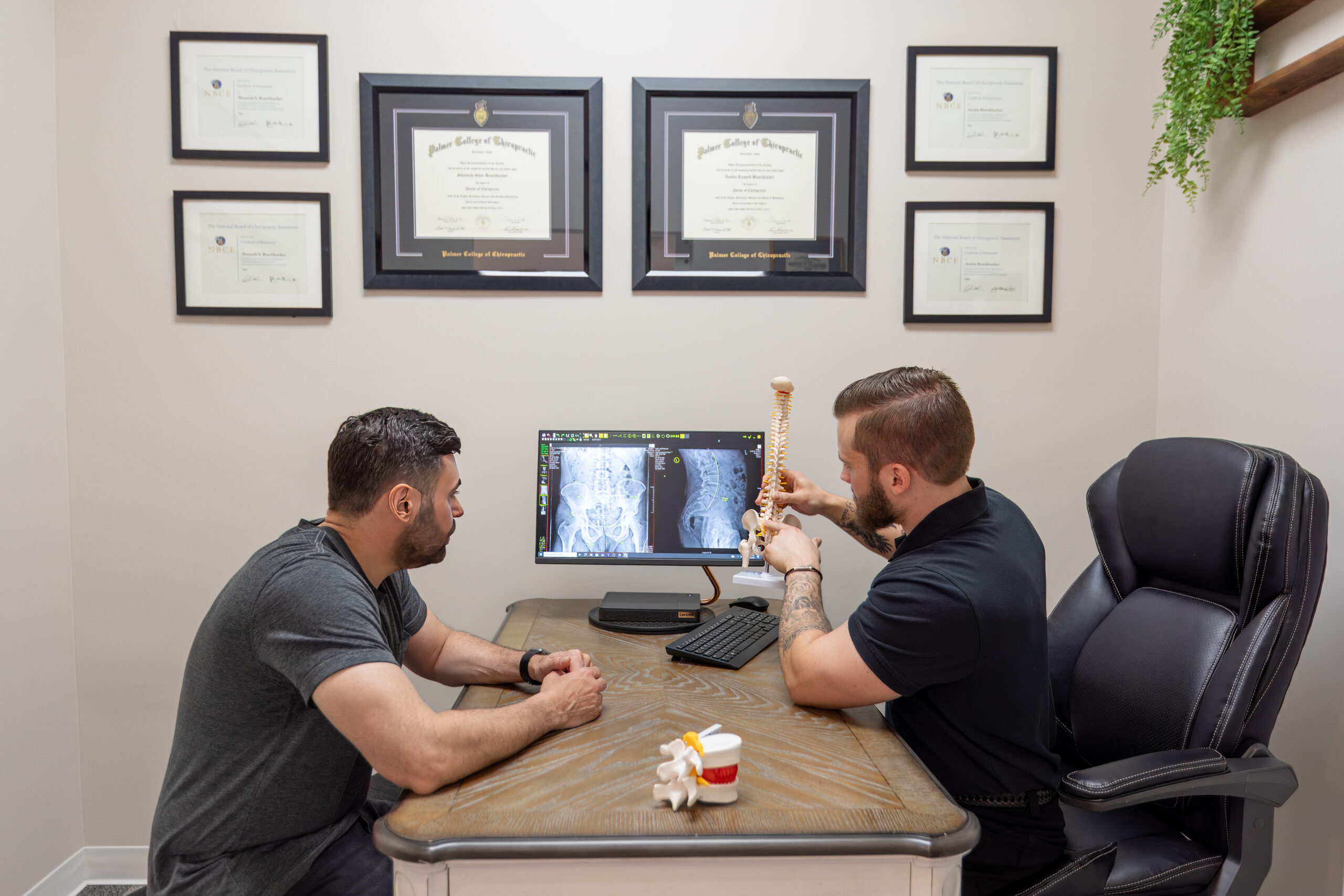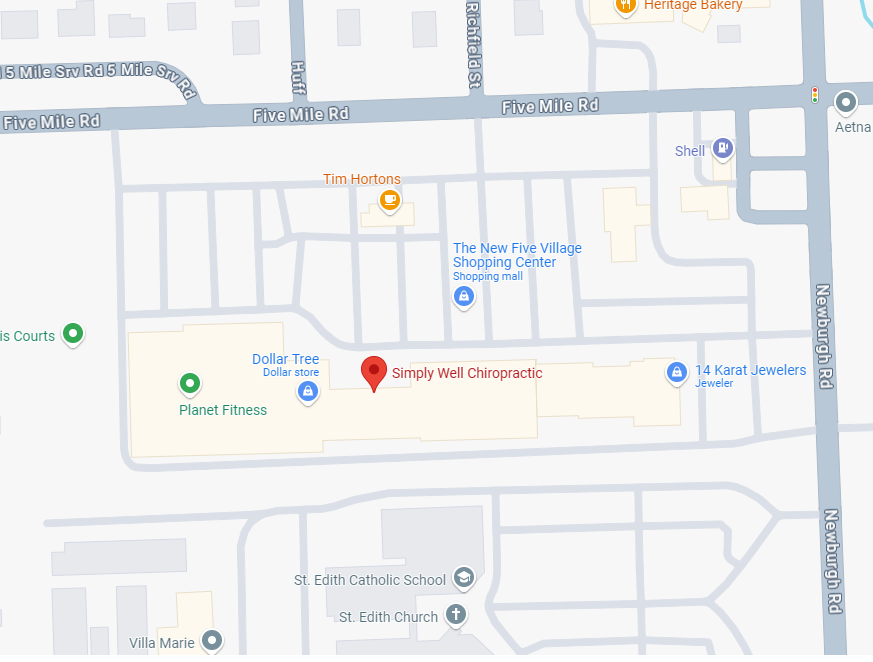Services Offered
Patient Education
When a patient presents with pain in muscles, tendons, or joints, we might suggest lifestyle adjustments to alleviate the symptoms. These changes could focus on the patient’s diet, exercise routine, self-care practices, and coping strategies. Understanding the effects of lifestyle choices on the body is crucial in identifying the root of your discomfort and taking preventive measures. It’s a fact that an unhealthy diet can lead to various health issues like stroke, heart disease, diabetes, and others.
Some common lifestyle choices that affect health include:
- Regular physical activity: Exercise not only helps in maintaining a healthy weight but also strengthens muscles and bones.
- Balanced diet: Eating a variety of fruits, vegetables, whole grains, and lean proteins can provide essential nutrients for overall health.
- Stress management: Practicing relaxation techniques such as meditation or yoga can help reduce stress levels, which can alleviate pain symptoms.
- Sufficient sleep: Getting enough quality sleep is crucial for the body to repair and rejuvenate itself.
- Avoiding harmful substances: Limiting alcohol consumption and avoiding tobacco products can significantly improve overall health and well-being.
Chiropractic Manipulation
If a patient is experiencing lower back pain, neck pain, headaches, or pain in surrounding extremities joints we may recommend Chiropractic Manipulation as a form of treatment. Also known as Chiropractic Adjustment, this procedure is when a chiropractor uses their hands or a small instrument to apply a controlled, sudden force to a spinal joint. This spinal manipulation aims to improve spinal motion and the body’s physical function.
Chiropractic Manipulation is considered a safe and effective way to address musculoskeletal issues and promote overall wellness. By targeting specific areas of the spine that may be misaligned or restricted, chiropractors can help alleviate pain, improve range of motion, and enhance the body’s natural healing abilities. Patients often report feeling a sense of relief and increased mobility after a session of Chiropractic Manipulation.
Did you know…
When people think about chiropractors and the care they offer, they typically associate it with adjusting the neck, back, and pelvis for spinal discomfort. However, did you know that our doctors can also assess and treat other body areas, especially the extremities, which are limbs of the body such as shoulders, knees, ankles, and elbows? Problems in the extremities can affect overall well-being and lead to issues in the spine, and vice versa. While not the only cause of extremity discomfort, sports injuries often impact the extremities first, and if not addressed, can later affect the spine or other areas of the body.
By assessing and treating areas like shoulders, knees, ankles, and elbows, chiropractors can help improve overall function and alleviate pain in these crucial parts of the body. Neglecting issues in the extremities can have a ripple effect on the spine and vice versa, underscoring the interconnectedness of the body’s various components.
If you are dealing with back pain, a sports injury, or discomfort in your extremities, seeking the expertise of a chiropractor can offer a holistic solution to address your concerns and help improve your mobility and overall well-being. With proper treatment and guidance, chiropractic adjustments can play a positive role in a comprehensive approach to health and wellness.
Spinal Decompression Therapy
Non-surgical spinal decompression, a type of chiropractic treatment, employs advanced technology to alleviate pressure on spinal discs and stimulate healing. The Chattanooga Triton 6M Dynamic Traction System, a cutting-edge device, uses computer-controlled traction to gently stretch the spine, creating negative pressure within the discs. This negative pressure facilitates the retraction of herniated or bulging discs, easing nerve pressure and enhancing oxygen and nutrient flow to the affected area.
While spinal decompression offers broad benefits, it may not be appropriate for everyone. Individuals with specific contraindications such as pregnancy, severe osteoporosis, extreme obesity, prior spinal fusion surgery, or artificial discs or implants in the spine may not be suitable candidates for this therapy. It is crucial to seek advice from a healthcare professional to determine your eligibility for spinal decompression treatment.
Spinal decompression is often used as a treatment for:
- Degenerative Disc Disease: Degenerative disc disease is more of a condition than a disease. It occurs when the natural wear-and-tear on a spinal disc, due to aging, leads to pain, instability, and various symptoms. To address this, spinal decompression can aid in healing and reducing the pain linked to this condition. This technique involves gently stretching the spine, relieving pressure from the discs, and encouraging the circulation of nutrient-rich fluids to create a conducive healing environment.
- Facet Syndrome: Facet syndrome, a spinal condition resulting from degeneration affecting the joints at the back of the spine, can cause discomfort and rigidity in the back or neck. To alleviate pain linked to facet syndrome, spinal decompression is an effective treatment. This therapy works by alleviating pressure on the spinal joints, decreasing inflammation, enhancing mobility, and ultimately improving the individual’s quality of life.
- Herniated Discs: When the inner part of a disc protrudes through a crack in the outer layer, it leads to herniated or bulging discs, resulting in discomfort and sometimes affecting nearby nerves. Spinal decompression can help by creating negative pressure to retract herniated discs, reducing nerve pressure, relieving pain, and improving quality of life.
- Sciatica: Sciatica, a nerve condition, manifests as severe pain traveling from the lower back down one leg. It commonly stems from a herniated disc or bone spur compressing a nerve segment, causing inflammation, pain, and typically numbness in the leg. By alleviating pressure on the compressed nerves, spinal decompression therapy can offer significant relief from sciatic pain and enhance mobility.
Transcutaneous Electrical Nerve Stimulators (TENS)
Transcutaneous electrical nerve stimulation (TENS) therapy alleviates body pain by employing low-voltage electrical currents. Wondering how it operates? A TENS unit, powered by a battery, transmits electrical impulses via electrodes positioned on the skin’s surface. These electrodes are strategically placed near the pain-afflicted nerves or trigger points within the body.
This type of therapy is often used to relieve both chronic (long-lasting) and acute (short-term) pain. Here are some typical conditions that TENS can help treat:
- Osteoarthritis (a disease of the joints).
- Low back pain.
- Chronic pelvic pain.
- Fibromyalgia (aching and pain in joints, tendons, and body muscles, but especially along the spine).
- Tendinitis (an inflammation or irritation of a tendon).
Kinesio Taping
Kinesiology tape, usually made from a strong, stretchy blend of cotton and nylon, is frequently used to boost muscle performance, provide joint support, and prevent muscle misalignment. Moreover, it helps reduce pain, swelling, and muscle spasms.
While kinesiology tape may resemble elastic athletic tape, there are key distinctions between the two:
Kinesiology Tape:
Facilitates motion and relieves pain
Flexible and adaptable
Enhances circulation
Athletic Tape:
Provides support and restricts motion
Stiff and immobile
Reduces circulation
How the Tape Functions
Various theories exist regarding the mechanism of action of kinesiology tape.
- One theory suggests that kinesiology tape enhances neural circuitry balance within muscles, tendons, joints, and skin. This is believed to alleviate pain, reduce swelling, and enhance muscle performance and functionality.
- Another suggests that kinesiology tape is believed to readjust joint positions and may aid in restructuring collagen tissues, particularly in managing scar tissue.
Studies indicate that K-tape functions by improving circulation, lymphatic drainage, and enhancing proprioception.
Kinesiology tape gently lifts the top skin layers, creating space between the skin, fascia, and deeper tissues. This process is thought to boost circulation and lymphatic drainage, aiding in reducing swelling and inflammation. Furthermore, kinesiology tape can stimulate mechanoreceptors in the skin, muscles, and joints, providing sensory feedback to the brain. This stimulation can potentially alter sensory input within the proprioceptive system of muscles, joints, and skin. Proprioception allows you to sense your body’s position in space, helping you determine, for instance, how high your arm is raised.
Kinesiology tape is believed to reduce the activity of nociceptors (pain pathways) in muscles, skin, and joints. This reduction in painful signals to the brain is believed to help regulate muscle tone, reducing pain and muscle spasms.
A Quick Overview of the Benefits of K-Tape
- Enhancing movement
- Inhibition and pain management
- Support and stability
- Decreasing swelling
- Scar tissue management
Mechanical Massage
Soft tissue manipulation using machines is a common chiropractic method known as Mechanical (or Percussion) Massage. This type of massage can alleviate muscle tension, enhance flexibility and range of motion, reduce stiffness and soreness, and boost circulation. Patients benefit from a more targeted and intense massage with this technique, which can be used alongside manual therapies or as a standalone treatment.
The rhythmic pressure of mechanical massage can precisely target specific body areas, aiding in breaking up adhesions and releasing muscle tension. The repetitive motion of the machine simulates the feeling of a deep tissue massage without the discomfort of intense pressure, making it suitable for individuals who prefer a gentler approach. This method can be especially advantageous for athletes or those with active lifestyles, as it aids in recovery and supports overall muscle health. Whether part of a comprehensive treatment plan or enjoyed independently, a Mechanical Massage offers a unique and effective way to promote your body’s well-being.
Mechanical massage is an effective treatment used to help:
- Acute Pain
- Chronic Pain
- Post Injury
- Relieve tight musculature












![Copy of [Original size] Beige Green Simple Welcome to Neighborhood Greeting Gift Card (6)](https://getsimplywell.com/wp-content/uploads/2024/04/Copy-of-Original-size-Beige-Green-Simple-Welcome-to-Neighborhood-Greeting-Gift-Card-6.png)